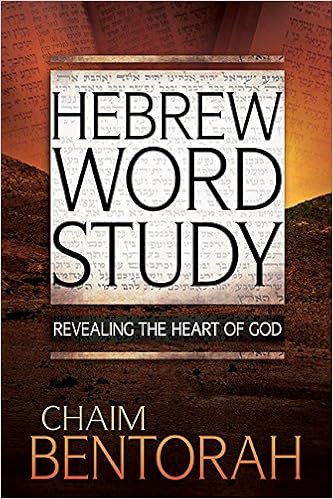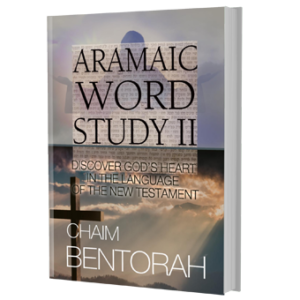
Esther 9:29: “Then Esther the queen, the daughter of Abihail, and Mordecai the Jew, wrote with all authority, to confirm this second letter of Purim.”
1 Kings 21:11: “And the men of his city, [even] the elders and the nobles who were the inhabitants in his city, did as Jezebel had sent unto them, [and] as it [was] written in the letters which she had sent unto them.”
I have said on numerous occasions and I fear I must constantly repeat myself. Some people call me a Hebrew scholar. I am most emphatically not a Hebrew scholar, not a linguist or philologist. I was simply a teacher of Biblical Hebrew who once taught in a small Bible College who has a graduate degree in Old Testament and Hebrew and a PhD in an area I personally find fascinating. However, I consider myself on the level of your local pastor who spends three to four hours every day studying the Word of God in the Biblical languages. The only difference is I am not bogged down with pastoral duties so I am free to research the work of true scholars, decipher their language and present it to you in a language that you and I understand. I am to the world of scholarship as to what Donald Trump is to the world of politics. I am basically a populist who speaks the language of the people and distain political correctness and standard protocol. In my case I distain the high fluent silver dollars words such as Epistemology is really a valid pre-supposition to neo-orthodoxy and will simply say personal experience weighs very heavy in my little area of Christianity.
The story is told about a group of theologians from various denominations who came together to discuss who Jesus is. They wanted to formulate a nice concise definition of Jesus to publish in a religious journal. After a week of discussion, debate, argument they were drawing up a conclusion when Jesus appeared to them in their midst and addressed them by asking: “Who do you say that I am?” A spokesman for the group stood up and said; “You are the eschatological manifestation of the ground of being, you are the kerygma manifested in the humanizing process.” Jesus responded by saying: “Huh???”
For instance I could say that post rabbinic texts such as the famous Bar Kokhbs letters are a strong indication that the Biblical Hebrew is not monolithic as most minimalist will claim but that it is really divided into three principal historical strata. This view is currently held by many linguist and philologist. We can therefore conclude that Biblical Hebrew is far from being homogeneous.
If I said that I would be lucky to sell even one book.
Instead, I could say that the Bible was written over a period of 1,000 years and during that time the language went through three stages of changes. That I think my average reader can understand. This little bit of scholastic understanding, however, is really important to understand and should not be left in the ivy towers of the scholars. It needs to filter down to us.
You see this addresses the problem that many Christian teachers run into who study Hebrew on their own without the benefit of a linguist background but do have a strong background in Greek. They will apply Greek exegesis to Hebrew. The New Testament was written over a period of 100 years. Most scholars reject the minimalist view that the Old Testament was written in just one go at it but covers a period of 1,000 years. So a word written by Moses might not have the same meaning as that of a post exilic or post Classical writers such as Esther, Ezra and Nehemiah. So you cannot apply the principle that if you render a word is a particular way in one place in Scripture it must be done throughout the rest of the book.
According to the noted Hebrew scholar, a true scholar, Dr. Avi Hurvitz it is generally understood that the language of Biblical Hebrew is not the same language from the beginning to the end of the Old Testament but is in fact a language that went through three phrases. In short the Biblical Hebrew is not homogeneous, which is one of those fancy words meaning that the language from beginning to end is not essentially alike.
The standard Hebrew Bible today is the Masoretic text which seems to give a uniform façade beginning with Genesis and ending with Chronicles. Yet, strip away all the dots and dashes and underneath the surface you will find considerable diversity. That is why when I teach Hebrew I will teach from the Masoretic text but for my own personal study I usually study from other text as the Greek Septuagint or Syriac translations where the diversity of the Biblical Hebrew is more apparent. You basically have three phrases of the Biblical Hebrew. There is the Archaic Biblical Hebrew which includes the poetic parts of the Pentateuch, the Early Prophets and the hymns of the Book of Psalms. There is the Standard or Classical Hebrew found in the prose sections of the Pentateuch and Early prophets such as Isaiah and Jeremiah and later prophets like Hosea, Amos and Micah. Then there is the later or post Classical Biblical Hebrew found primarily in the late compositions such as Esther, Daniel, Ezra, Nehemiah and Chronicles.
So how does this play out. Well look at the English word letter in Esther and I Kings. I Kings was written during the Classical phase and Esther in the post Classical phase. The post Classical phase shows the language after the captivity period where the Hebrew was greatly influenced by the Aramaic language or the language of the Babylonians and Assyrians and the Classical period before this influence. In Esther we find that Queen Esther wrote a second letter. The Hebrew word for letter in this post Classical phase is iggeret. Iggeret is totally unfamiliar to the Standard Biblical Hebrew. Thus in the Book of Kings the word used for letter is sepher. The Ugaritic which is an earlier language using grammar and vocabulary similar to Hebrew uses the word sepher for letters. In the Aramaic Targums and Syriac Peshitta which is post Classical you have the word for letters as iggarta which is the equivalent to the Hebrew iggeret. This new word for letter iggeret is substituted for sepher which came to mean a book or scroll that is a literary composition.
My point in all this is to explain why I seek to drill down into the core of Hebrew words. Our modern English translations are continually being updated as our knowledge of the Biblical Hebrew expands with archaeological and linguistical discoveries. Not only did the Biblical Hebrew go through changes in its 1,000 years of development but so too does our English language go through changes and it is a real challenge to bring this all down into something that an average Joe like me can understand and apply to my own personal relationship with God.
So I present to you my book Hebrew Word Study Revealing the Heart of God which is my attempt to apply modern archaeological and linguistic understanding to the Word of God in a practical and personal way where even such a seemingly unimportant thing like the difference between letter and book iggeret and sepher can open a whole new world of understanding to our relationship with Go








Recent Comments